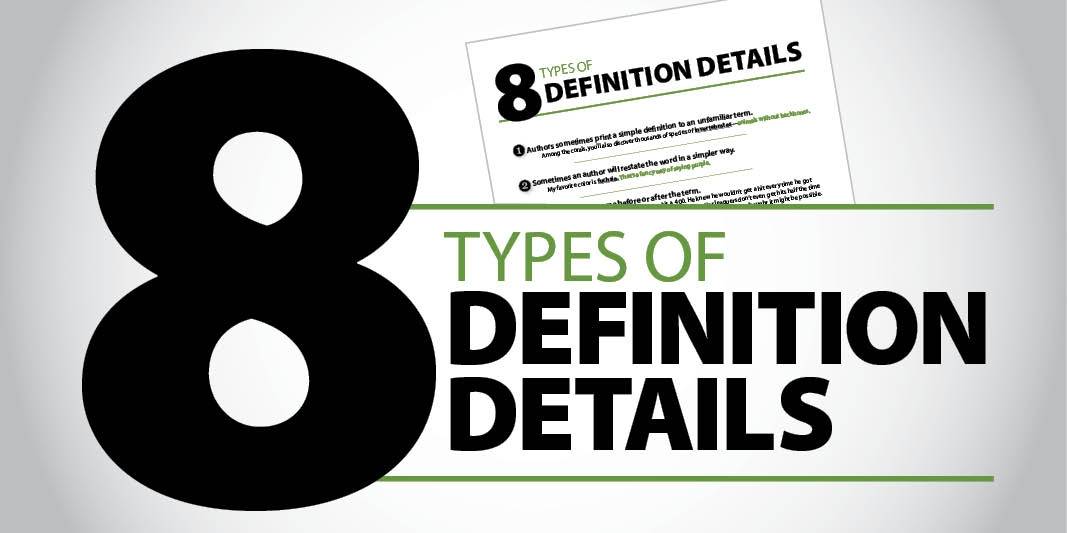writing
Define vocabulary in informative writing for clarity

Adding meaning to vocabulary in expository writing enhances a reader’s understanding and strengthens the overall clarity of the writing.
Students engage in various types of writing that can greatly benefit from defining vocabulary words, especially when they are writing about complex content in subject areas like science and social studies. Whether explaining concepts such as photosynthesis, the causes of a historical event, or an individual they have researched, students often encounter specialized vocabulary or technical terms related to the subject matter. Reminding them that the purpose of expository writing is to teach or inform the reader, defining those unfamiliar words demonstrates the importance of vocabulary in expository writing and helps their readers better understand the material.
Compare this to how the students themselves rely on context clues within informative text to comprehend a new idea or concept. These nearby synonyms, examples, and simple explanations help them to better grasp complex material. Now, as the author, the student adds authority to his own writing by doing the same for his readers. By incorporating these clarifying phrases, students demonstrate a sense of audience. He is subliminally saying to the reader…You may not know what that word means, so let me define it for you.
Reveal examples of 8 different types of definition details
One effective way to add definitions to vocabulary in expository writing is by using appositives. An appositive is a grammatical structure that provides additional information or clarification about a noun in a sentence. It typically appears right after the noun it describes and is often set off by punctuation. By using appositives, students can seamlessly define complex or unfamiliar terms, helping their readers understand key concepts without disrupting the flow of the writing.
How a writer defines unfamiliar terms depends on the content, the context, and the writer’s intent. Teaching eight types of definition details shows writers how definitions can take different forms, such as:
1. Authors sometimes include a simple definition to an unfamiliar term.
Ex. Among the corals, you’ll also discover thousands of species of invertebrates—animals without backbones.
2. Sometimes an author will restate the word in a simpler way.
Ex. My favorite color is fuchsia. That’s a fancy way of saying purple.
3. Explanations can come before or after the term.
Ex. But Ted wanted to be great. He wanted to hit a .400. He knew he wouldn’t get a hit every time he got up to bat – no major leaguer has ever done that. In fact, major leaguers don’t even get hits half the time they’re at bat. But getting a hit 40 percent of the time—batting .400—Ted thought it might be possible.
4. Some authors include a literal translation of the word’s meaning.
Ex. Slugs, like snails, are GASTROPODS (gas-trah-pods), which means “stomach-foot” (although they don’t digest with their feet).
5. Authors may describe the purpose of something to make it more clear.
Ex. Unlike snails, which have a shell to duck into, slugs have only a head-covering called a mantle, a loose flap of skin they can hide under if they get scared.
6. Authors include an example of the term to help to clarify meaning.
Ex. Some feared that it could be dangerous to object. Vigilante groups, like the Ku Klux Klan, reacted violently against those who tried to change the way blacks were treated.
7. Authors often put related words/ideas in a series separated by commas.
Ex. The recognizable words may be a clue as to the meaning of the unfamiliar word. The four-sided shapes included squares, rectangles, and rhombuses.
8. Authors might define a word by using an antonym in the same or nearby sentence.
Ex. Some senators offer only a few words in support of an issue, while others provide a filibuster.
Provide students with simple phrases for including definition details
For a more basic way to incorporate definition details into informative writing, provide several subtle phrases. These allow for clarifying information to be added within the flow of any sentence.
- that means…
- this means…
- which means…
- _____ are…
- like…
- for example…
- for instance…
- one kind is…
- one type is…
- such as…
Use punctuation marks to set off definition details
A variety of punctuation marks can set up the insertion of word meanings in expository writing. For example:
- The colon [:] indicates a list of examples.
Ex. The three primary colors are essential for painting: red, blue, and yellow, the building blocks of all other colors. - Parentheses [( )] signal a secret to the reader.
Ex. Slugs, like snails, are GASTROPODS (gas-trah-pods), which means “stomach-foot” (although they don’t digest with their feet). - Definitions can be set off by em-dashes [–] in the middle of a sentence.
Ex. The author—an expert in her field—provides valuable insights. - Commas [ , ] are used most often.
Ex. The ocean, a vast body of saltwater, covers over 70% of the Earth’s surface.
Definitions are sometimes revealed in different type styles as well:
- italicized
- underlined
- ALLCAPS
- bold
Encourage students to practice using different punctuation marks to see how they affect the tone and flow of their writing. This exploration will deepen their understanding of sentence structure and enhance their writing skills.
Incorporating appositives into student expository writing not only enriches vocabulary but also encourages students to think critically about their audience. By using definition details effectively, students can make their writing more accessible and engaging, fostering a deeper connection with their readers. Practicing these techniques helps students expand their vocabulary in expository writing, develop a stronger command of language, and appreciate the power of precise written communication.







